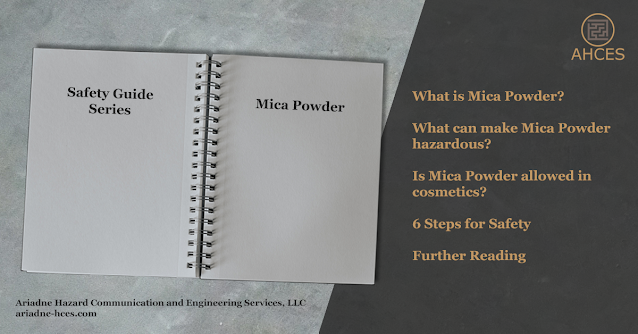Benzaldehyde Safety Guide
What is Benzaldehyde?
Benzaldehyde, also known as benzoic aldehyde, is an organic compound with a distinct almond odor. It can be found naturally in plants of the genus Prunus, including the bitter almond. Both natural and synthetic benzaldehyde is used as an almond fragrance and flavoring.
Benzaldehyde has the CAS Number 100-52-7.
The CAS Number is used to identify benzaldehyde on documents including safety data sheets and chemical labels. When looking for benzaldehyde in a product, check for the CAS number on the associated safety documents.
Notable Properties of Benzaldehyde
Benzaldehyde is liquid at room temperature and has an almond scent. Benzaldehyde is clear when fresh, though readily yellows with age, and should be stored in an air-tight, opaque contained to limit yellowing.
What Makes Benzaldehyde Hazardous?
Benzaldehyde is an irritant; it can cause skin, eye, and respiratory irritation.
Benzaldehyde can cause allergic reactions in those allergic to some compounds found in almonds or other stone fruit. It has also been shown to be a sensitizer, resulting in the development of an allergic reaction after repeated exposures.
Benzaldehyde is also hazardous to the environment, as it is toxic to aquatic organisms and can readily leach into soil and groundwater. Benzaldehyde is not soluble in water, but can still form toxic films and emulsions.
Benzaldehyde Frequently Asked Questions
Is benzaldehyde soluble in water?
No, benzaldehyde is insoluble in water.
Is benzaldehyde flammable?
Since benzaldehyde is an organic compound, it can burn. It is not considered flammable for the purposes of classification of physical hazards under OSHA for workplace safety or as a Class 3 Flammable Liquid for DOT transportation safety.
6 Steps for Safety
Step 1: Read the Warnings
When working with a product for the first time, always read all the safety documents first. This includes safety data sheets, which should be provided by the manufacturer or importer of the benzaldehyde product. There may also be an OSHA chemical label or a Consumer Protection label on the packaging of the cinnamaldehyde product. These documents all contain important information on the hazards of the product and instructions on how to mitigate those hazards.
Step 2: Prepare Your Workspace
Creating a safe workspace, sometimes referred to as engineering control, is a key component of working safely with any potentially hazardous substance.
Benzaldehyde is a liquid in its pure form, which means it can easily flow when spilled, as well as seep into surfaces. Therefore, it is important to have a spill kit available with absorbent material to soak up and capture any spilled benzaldehyde. It is also important to quickly absorb any spilled material to prevent release into the environment.
Step 3: Gather Your PPE
For benzaldehyde, you will need the following PPE.
- Gloves
- Basic disposable gloves, or other rubberized gloves, will prevent benzaldehyde from touching the skin on the hands and causing irritation.
- Rubberized Apron
- A rubberized apron, or another body covering that prevents benzaldehyde from soaking into clothing, is best to prevent skin exposure.
- Respiratory Protection
- A mask meant for organic vapors will protect the respiratory system from irritation.
- Eye Protection
- Safety goggles which form a protective seal around the eyes can be used to prevent benzaldehyde splash from reaching the eyes.
Step 4: Clear Your Workspace
Having a clear workspace is important for safety as it can prevent accidents caused by tripping, as well as allowing you to easily spot any spills.
This is also a good time to ensure all engineering controls are functional. When working with large quantities of benzaldehyde, it is good to have a spill kit on hand to contain liquid spills. Having materials such as activated carbon on hand can also be useful in the event of a large spill to help neutralize odors.
Step 5: Do The Work
If engineering controls and PPE are used properly, working with benzaldehyde can be done safely.
If work cannot be completed in one sitting, be sure to properly seal any benzaldehyde containers to prevent spills or accidental release when not in use.
Step 6: Clean Up
Benzaldehyde may leave residue from any drips or small spills. Clean up benzaldehyde with an absorbent material, such as paper towels, or a granular absorbent such as sawdust.
Be sure to dispose of any waste in accordance with local regulations.
Further Reading
The National Library of Medicine has a PubChem Benzaldehyde Summary.
Check out the Safety Guide Series Hub for more safety guides.
Sources Cited
International Fragrance Association (n.d.). The IFRA Transparency List. IFRA Fragrance. Retrieved April 16, 2024, from https://ifrafragrance.org/priorities/ingredients/ifra-transparency-list
National Center for Biotechnology Information (2024). PubChem Annotation Record for , BENZALDEHYDE, Source: Hazardous Substances Data Bank (HSDB). Retrieved April 16, 2024 from https://pubchem.ncbi.nlm.nih.gov.
National Center for Biotechnology Information (2024). PubChem Compound Summary for CID 240, Benzaldehyde. Retrieved April 16, 2024 from https://pubchem.ncbi.nlm.nih.gov/compound/Benzaldehyde.
U.S. EPA. Health And Environmental Effects Profile for
Benzaldehyde. U.S. Environmental Protection Agency, Washington, D.C.,
EPA/600/X-85/395 (NTIS PB88174537).





Comments
Post a Comment